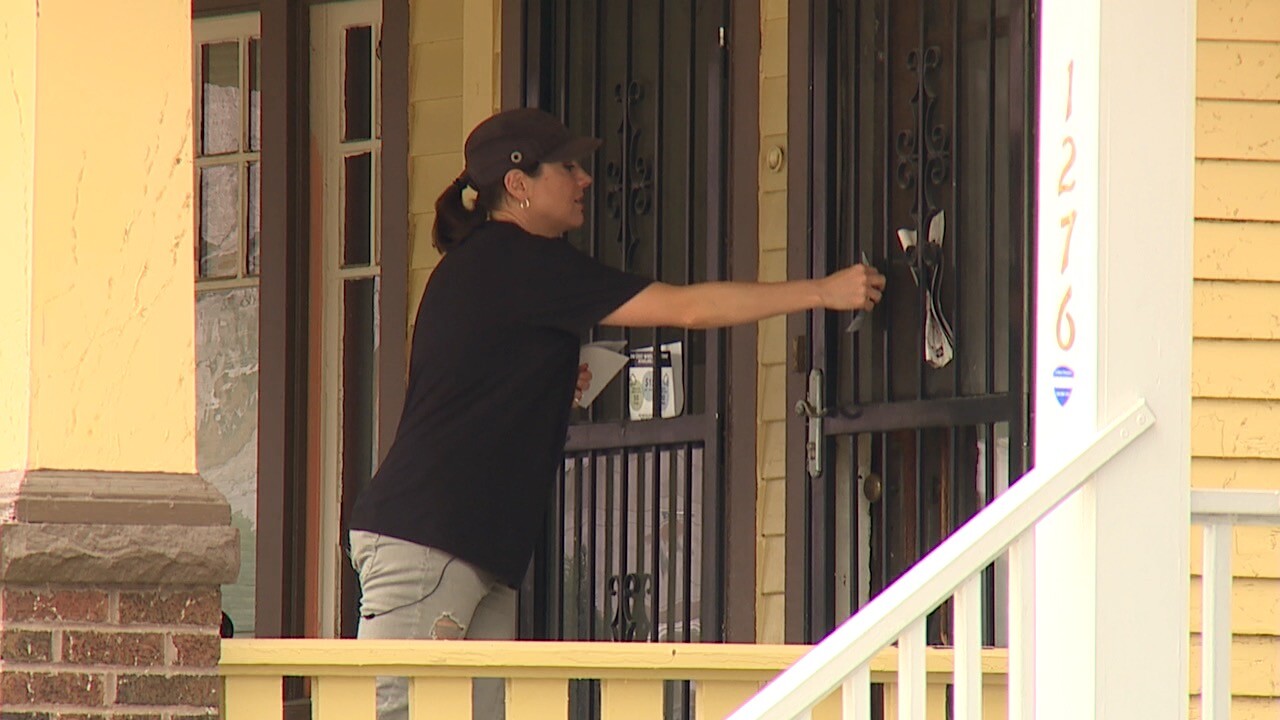EAST CLEVELAND, Ohio — It is one of the least connected cities in Ohio and it borders the least connected major city in America. The digital divide in East Cleveland, in many respects, is like a canyon. However, as the city heads back to school in the coming days, that divide is slowly closing not just for students, but their families as well.
At the start of the COVID-19 pandemic, some students at East Cleveland schools were sent home to begin remote learning with paper and pencil, prompting school and government officials, alongside faith and non-profit leaders, to scramble to outfit students with much-needed technology, including Chromebooks and hotspots. Thanks to a substantial grant from the Cleveland Browns prior to the 2020-2021 school year, the district was able to achieve a 1:1 student to technology ratio, allowing teachers and students to seamlessly transition between remote, in-person and hybrid learning models. It was a temporary solution, district officials said.
This school year, they're working on a permanent one.
Part of that endeavor is the creation of the Parent Empowerment Center, which will soon occupy the former Chambers Elementary School. The center aims to be a one-stop shop for a litany of different public and private resources, including computer labs, writing workshops, workforce development, digital literacy training and much more. Jewel Heath, the coordinator of the new facility, said the empowerment center will help the district achieve what has been called the "two-generation approach."

"We recognize that when we, as a school district, enroll a child, we’re not just enrolling a student. We’re enrolling a family," Heath said. "At the start of the pandemic, you had parents that were stepping into the role of educators and not knowing how to use the tools that their children were using. As a family, it becomes a point of frustration when you can’t give your child the support that they need because you don’t have the information to do so. A lot of students, a lot of children were teaching their parents and grandparents how to use the same technology. We don’t want to see that happening again."
Heath, whose father managed a store and martial arts studio in East Cleveland when she was a child, started at her position in July and she had to hit the ground running. The former Chambers Elementary School, which was recently closed to due dropping enrollment, is abuzz with activity: furniture is being assembled; walls are being painted and technology is being installed.
Bridging the digital divide in East Cleveland is one of the key missions of the empowerment center.
"The level of inequity when you don’t have access to technology is pervasive,” Heath said.

Having the technology is one thing; having broadband access is quite another.
According to the FCC’s Broadband Deployment Map, large swaths of East Cleveland are served by two or fewer fixed broadband providers. The speeds of those available services, however, are paltry and hardly sufficient to support remote learning or telehealth appointments. The broadband access maps also hide the fact that census tracts can be listed as being served by an internet provider if only a few homes or a business in that neighborhood have access. This is largely the case in East Cleveland.
Proponents of greater broadband access have called this ‘digital redlining.’

“Everything is online so how do you deprive someone of access to a better future by not giving them something as basic as Internet access. That is ridiculous,” Heath said. “We have to do better and I’m glad we’re trying to do better.”
The empowerment center, which was funded through several different grants, including a sizable contribution from the Cleveland Browns Foundation, will also be the new home of PCs for People, a non-profit organization that aims to bring technology and low-cost computers to digitally-starved cities and towns across the country.
The non-profit recently started a high-speed, wireless internet service to residents living near East Cleveland Schools. Using short-range towers installed on the roofs of several schools, the wireless internet service can bring speeds 10 times faster than other services available in the area -- at less than half the cost.
The service, which promises 50 megabits per second download speeds, is just $15 a month.
“Our goals are to serve the communities in need — not necessarily to build a large nationwide map of connectivity but to build a map that fills in those holes,” said Bryan Mauk, the chief innovation officer of PCs for People. “The communities that have been left behind, those are the communities that we want to serve. So much stuff has gone online and to be isolated from that is critical. East Cleveland, in particular, as a neighborhood, has been redlined and not invested in for years. We’re thrilled to bring that connectivity to the community and bring it at an affordable price.”
And perhaps there is no better way to introduce the service to the community than through an ice cream truck handing out frozen delectables.

Amanda Marshall, the operations manager for WISP (PCs for People’s internet service), walked door to door in the neighborhood surrounding the new empowerment center. A brutally warm and humid day did nothing to curb her enthusiasm.
“We’re out in the area telling people about our new internet service. It’s only $15 per month,” Marshall said as she pitched the service to a homeowner. “If you want to pay for your second month, which is $15, you can get a free laptop. If you need a computer, we have those.”
As of late July, the WISP service had already signed on more than 200 customers, which has been higher than projected. Mauk expects the service to continue to grow as word of mouth spreads. Since the start of the pandemic, PCs for People has connected 40,000 families with computers, devices and internet service.

Ultimately, he said, the goal of the service and PCs for People is to get more people connected in an increasingly digital-first economy.
“The whole economy has largely become digitized and making sure that everybody is able to participate in that online economy. Even just for generational wealth, this is beyond just a residential issue,” Mauk said. “It’s not just 'if you build it they will come,' It’s about having an internet solution, having the devices and the support and really that holistic approach.”

The holistic approach also includes digital literacy outreach and resources that will soon occupy East Cleveland Schools’ Parent Empowerment Center. In addition to providing retail and customer service space for the WISP service, PCs for People will also be offering digital literacy programming at the empowerment center.
“It’s a journey of love. I like to say that we’re birthing something new and that’s really exciting,” Heath said.



